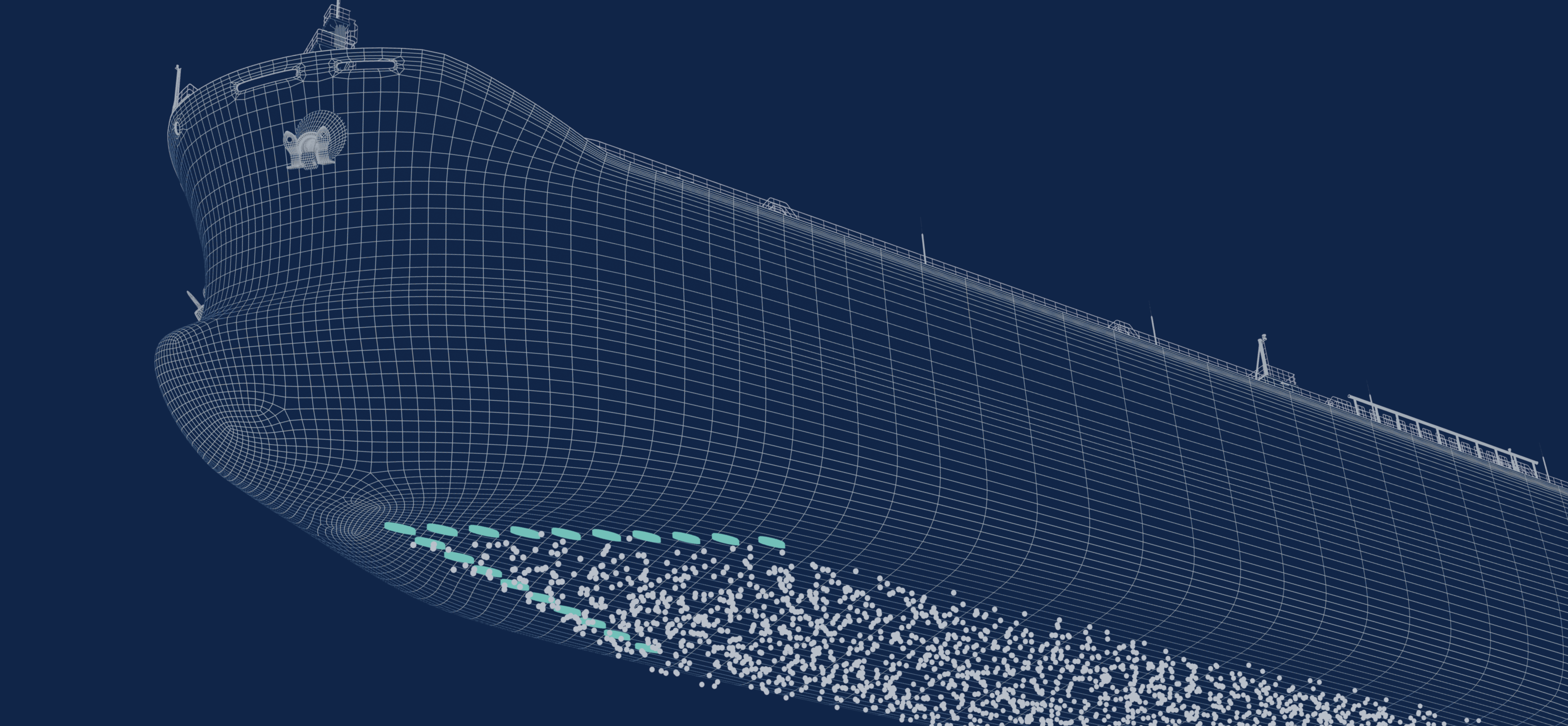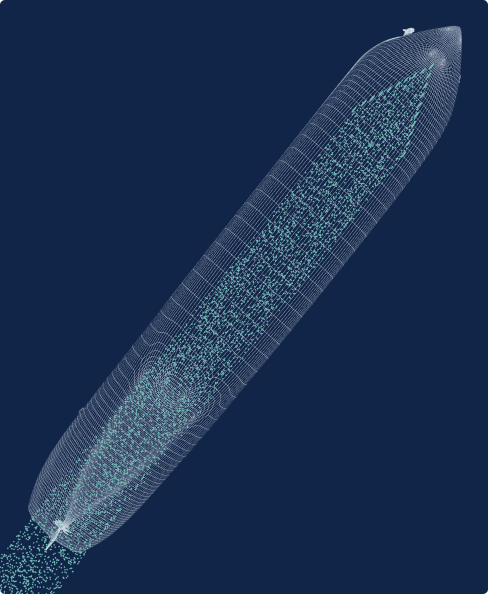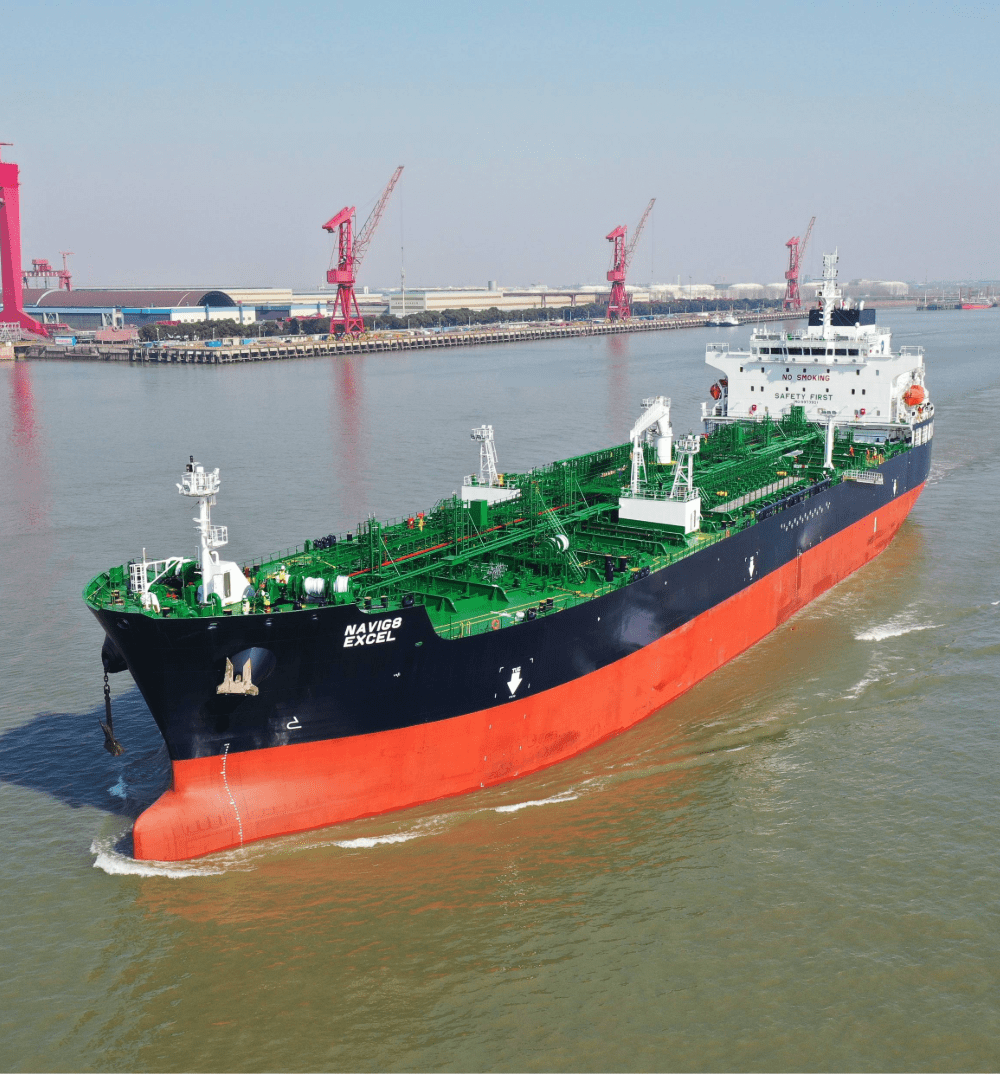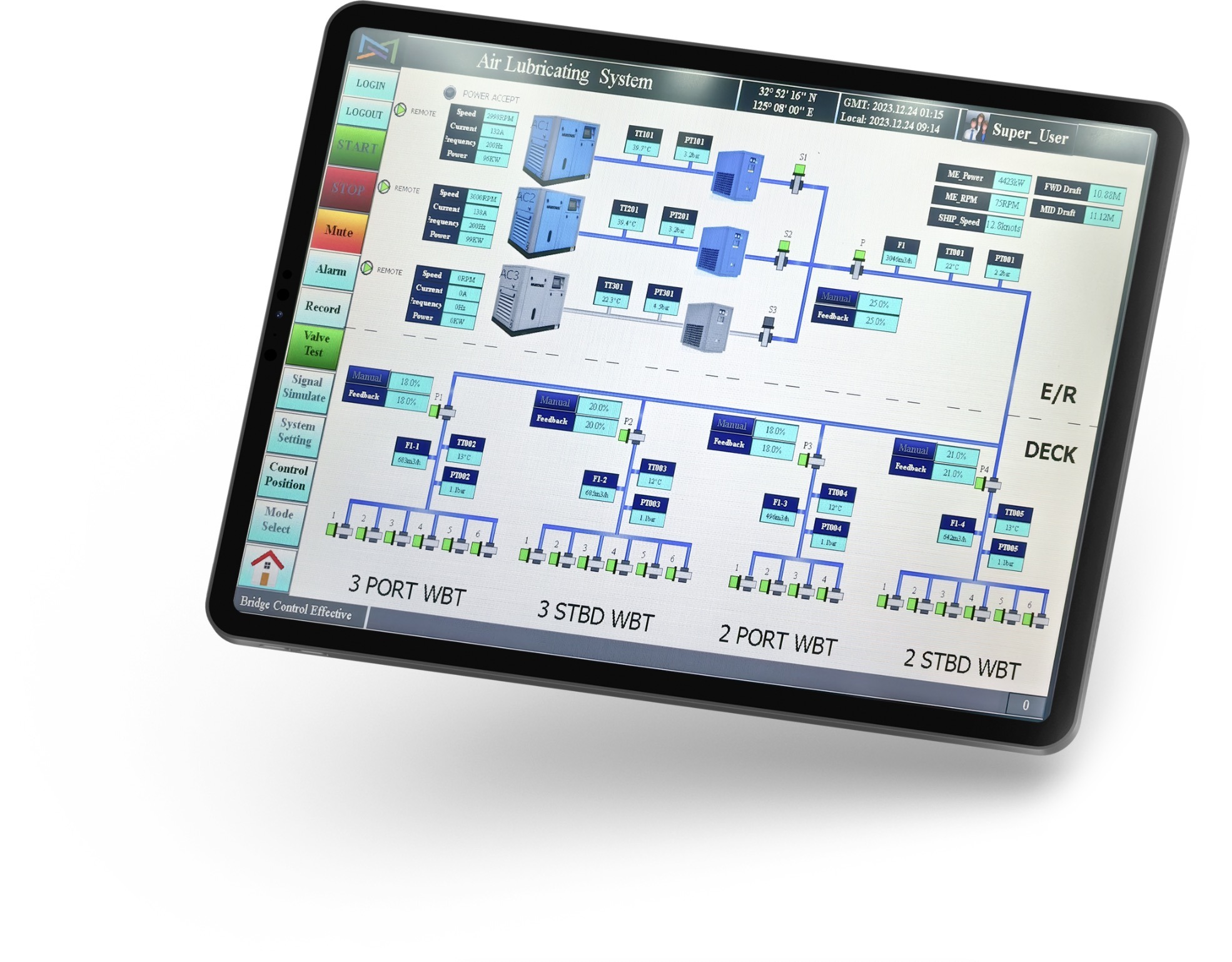How does it work?
Utilising advanced air lubrication technology, the ALS creates a thin layer of air beneath the hull in a proprietary configuration. This layer dramatically reduces the frictional drag by replacing water, a denser medium, with air. The result is a substantial reduction in fuel consumption, leading to decreased operational costs and a significant lowering of greenhouse gas emissions.
The Clean Marine ALS has been installed on six of Navig8’s newbuild MR vessels delivered in 2024, the Navig8 Excel, Navig8 Exceed, Navig8 Excellence, Navig8 Estelle, Navig8 Executive and Navig8 Express.













